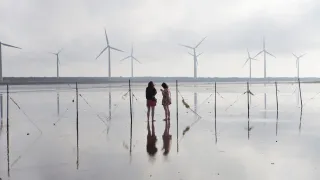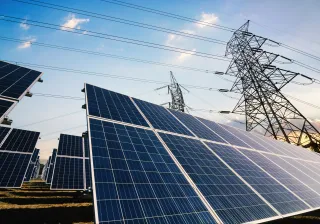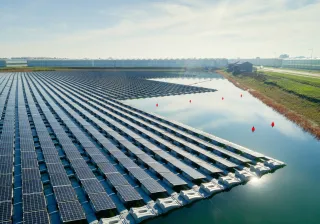As the world seeks to transition to cleaner energy sources, electricity markets need to foster investments in renewables, support security of supply, and ensure efficient use of resources, while keeping electricity price levels and variations reasonable. The results of a European research project indicate a significant decrease in system costs and decreased reliance on fuel imports if the cost of capital of renewable energy projects can be decreased.
The European TradeRES project focused on developing and studying market designs tailored to a renewable energy-dominated future, where wind and solar play a central role. The project explored various scenarios of a fully decarbonized European electricity market, analysing the impact of demand-side flexibility, hydrogen sector coupling, and wind and solar energy share. The project provides information to support decision making as the European electricity market reform takes place.
Renewable fuel prices and cross-sectoral demand drive electricity prices
The findings challenge the common belief that prices in future electricity markets will continuously be low due to renewables’ low variable costs. Instead, factors like renewable fuel prices and cross-sectoral demand drive electricity prices in many situations.
One significant output of the project was a comprehensive case study focusing on the risk management and the cost of capital for renewable energy investments, particularly wind power. Risks increase the cost of capital, which is particularly challenging for renewable energy investments, where most expenses are capital costs. The study shows how the cost of capital can have a dramatic impact on system development. For example, increasing the weighted average cost of capital for wind power plants from 3% to 11% resulted in a 37% rise in total system costs in one of the scenarios, while also increasing the reliance on fuel imports.
The research demonstrates that risk management schemes, such as Contracts for Difference (CfDs), can make renewable energy projects more affordable. Different designs of CfDs were evaluated, revealing how variations in contract design can influence market outcomes and investment risks.
The project’s findings demonstrate that the current market structure is generally suitable for the future electricity market as it can result in efficient price signals. However, significant uncertainties remain. Well-designed financial instruments can help mitigate price risks and ensure more stable returns.
Modelling and simulation in the heart of the project
Energy system modelling and extensive electricity market simulations were in key role in the project. Simulations helped compare the performance of the proposed market mechanisms against an optimised benchmark power system, highlighting the potential of the market mechanisms to ensure security of supply, enable affordable costs for consumers, and support adequate returns on investment for power producers. Several simulation and optimisation tools were linked through a workflow management software, allowing a comprehensive look into several market mechanisms in various European electricity markets and regions.
The TradeRES project is dedicated to developing and testing innovative electricity market designs that can meet society’s needs of a near 100% renewable power system. By combining detailed simulations, iterative analysis, and stakeholder engagement, the project tackles technical and economic challenges posed by the energy transition. The project is running from 2020 to 2024 and brings together 10 partner organisations from 6 countries in Europe. The project has received funding from the European Union’s Horizon 2020 research and innovation program under grant agreement 864276.
Join us in the free webinar Electricity Market Design for ~100% Renewable Power Systems on November the 19th, 2024, at 16:00 (EET)!
At this webinar, we will present the outcomes of the TradeRES project on future electricity market design. Register here.




